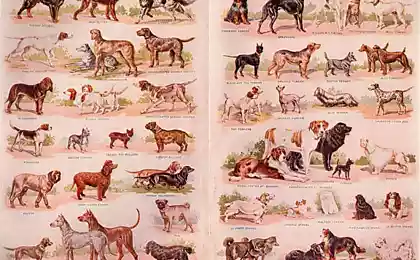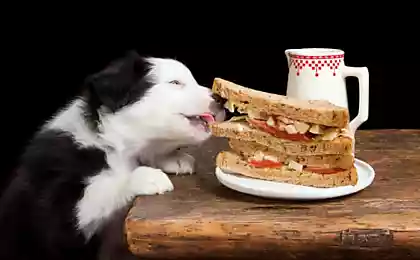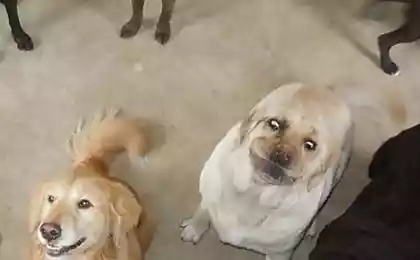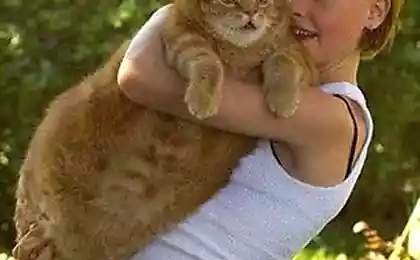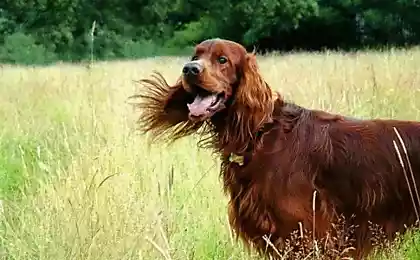491
Jealousy is inherent even dogs
Jealous dogs almost convinced zoologists that the human ability to be jealous of originates in the animal world.
It is believed that the jealousy peculiar to man, because the sense it involves a complex mental organization and complex reasoning – for example, a jealous need to assess the threat from a potential rival. And a large part of psychological research on the topic of jealousy for romantic relationships and the damage caused to them by the treachery of one of the partners.
Three million nine hundred ninety six thousand seven hundred seventy eight
But, on the other hand, it's obvious that jealousy is not limited to sexual-romantic relationships. Jealous of you friend, brother or sister, a colleague, in the end, if you notice that he or she is no longer interested in your Affairs and started to be interested in strangers. That is, jealousy can be described as the feeling that arises in response to the threat of any social relations, that is something like a defensive response to invasion from the outside. And why in this form she can't be in other animals with well-developed social life?
Generally speaking, the idea of the existence of "animal" jealousy is not so new. Even Darwin speculated that dogs can be jealous, and after many assumed that animals do to this feeling is quite capable. Yes, in fact, many dog owners could talk about the manifestations of jealousy at their Pets. But one thing – speculation and casual observation, and quite another matter – purposeful study. And only now zoopsychological got around all the rules to test on animals the ability to feel jealousy.
Christine Harris (Christine Harris) and Caroline Provost (Caroline Prouvost), University of California, San Diego has adapted to the dog experiment, which was designed for children. It is known that children to six months can be jealous of their mothers to other children set it in experiments in which mothers took care Nof dolls like real babies.Something similar is staged with the dogs.
Their owners had to completely ignore them, doing extraneous things. And in one case, a man had to play with a toy dog that was able to move his tail, barking and whining, in the other case, the owner played "Jack the lantern" (a doll with a pumpkin for Halloween), in the third case, the person read aloud a children's book-the layout, which was playing some tunes. For the experiment chose 36 not very large dogs, weighing more than 16 kg and not more than 38 cm in length – if the animals were larger, in the event of a too violent expression of feelings with them it would be difficult to cope.
It is easy to understand that Halloween pumpkin and the singing book introduced in the experiment to be able to see that jealousy – because this feeling arises not just in response to the lack of attention of a partner, and in response to the threat of a relationship with another individual. Indeed, as the researchers write in their article in PLoS ONE, dogs two to three times more actively sought to attract attention to himself, when he saw that the owner plays with the toy dog. Attempts to attract attention were very different dogs tried to touch the man, climbed under the arm, tried to squeeze between him and the toy, and even tried to bite it. Only in one case out of thirty-six the dog tried to attack the pumpkin and the book.
The dogs tried to attract the attention of people trying to be more faithful and affectionate. Better than all this was manifested with the toy dog, which suggests that the animals perceived the toy as a rival. Most of the dogs even tried to get acquainted with a toy rival, sniffing him from behind.
Hence, we can conclude that jealousy does not necessarily need a human brain and complex social structure. That is jealousy – one of the ancient basic emotions inherent in different animals. We can say that jealousy originates in biology rather than in the psyche (here, of course, need to be mindful of the fragility of the boundaries between the biological and the mental, and their interdependence).
Enough to be jealous of lack of attention from the partner, and the presence of an obvious competitor. Further zoopsychologists want to "test for jealousy" other species of animals, and at the same time and try to discover other kinds – for example, the internecine jealousy of the pups of different litters competing for parental attention.
Source: nkj.ru
It is believed that the jealousy peculiar to man, because the sense it involves a complex mental organization and complex reasoning – for example, a jealous need to assess the threat from a potential rival. And a large part of psychological research on the topic of jealousy for romantic relationships and the damage caused to them by the treachery of one of the partners.
Three million nine hundred ninety six thousand seven hundred seventy eight
But, on the other hand, it's obvious that jealousy is not limited to sexual-romantic relationships. Jealous of you friend, brother or sister, a colleague, in the end, if you notice that he or she is no longer interested in your Affairs and started to be interested in strangers. That is, jealousy can be described as the feeling that arises in response to the threat of any social relations, that is something like a defensive response to invasion from the outside. And why in this form she can't be in other animals with well-developed social life?
Generally speaking, the idea of the existence of "animal" jealousy is not so new. Even Darwin speculated that dogs can be jealous, and after many assumed that animals do to this feeling is quite capable. Yes, in fact, many dog owners could talk about the manifestations of jealousy at their Pets. But one thing – speculation and casual observation, and quite another matter – purposeful study. And only now zoopsychological got around all the rules to test on animals the ability to feel jealousy.
Christine Harris (Christine Harris) and Caroline Provost (Caroline Prouvost), University of California, San Diego has adapted to the dog experiment, which was designed for children. It is known that children to six months can be jealous of their mothers to other children set it in experiments in which mothers took care Nof dolls like real babies.Something similar is staged with the dogs.
Their owners had to completely ignore them, doing extraneous things. And in one case, a man had to play with a toy dog that was able to move his tail, barking and whining, in the other case, the owner played "Jack the lantern" (a doll with a pumpkin for Halloween), in the third case, the person read aloud a children's book-the layout, which was playing some tunes. For the experiment chose 36 not very large dogs, weighing more than 16 kg and not more than 38 cm in length – if the animals were larger, in the event of a too violent expression of feelings with them it would be difficult to cope.
It is easy to understand that Halloween pumpkin and the singing book introduced in the experiment to be able to see that jealousy – because this feeling arises not just in response to the lack of attention of a partner, and in response to the threat of a relationship with another individual. Indeed, as the researchers write in their article in PLoS ONE, dogs two to three times more actively sought to attract attention to himself, when he saw that the owner plays with the toy dog. Attempts to attract attention were very different dogs tried to touch the man, climbed under the arm, tried to squeeze between him and the toy, and even tried to bite it. Only in one case out of thirty-six the dog tried to attack the pumpkin and the book.
The dogs tried to attract the attention of people trying to be more faithful and affectionate. Better than all this was manifested with the toy dog, which suggests that the animals perceived the toy as a rival. Most of the dogs even tried to get acquainted with a toy rival, sniffing him from behind.
Hence, we can conclude that jealousy does not necessarily need a human brain and complex social structure. That is jealousy – one of the ancient basic emotions inherent in different animals. We can say that jealousy originates in biology rather than in the psyche (here, of course, need to be mindful of the fragility of the boundaries between the biological and the mental, and their interdependence).
Enough to be jealous of lack of attention from the partner, and the presence of an obvious competitor. Further zoopsychologists want to "test for jealousy" other species of animals, and at the same time and try to discover other kinds – for example, the internecine jealousy of the pups of different litters competing for parental attention.
Source: nkj.ru


